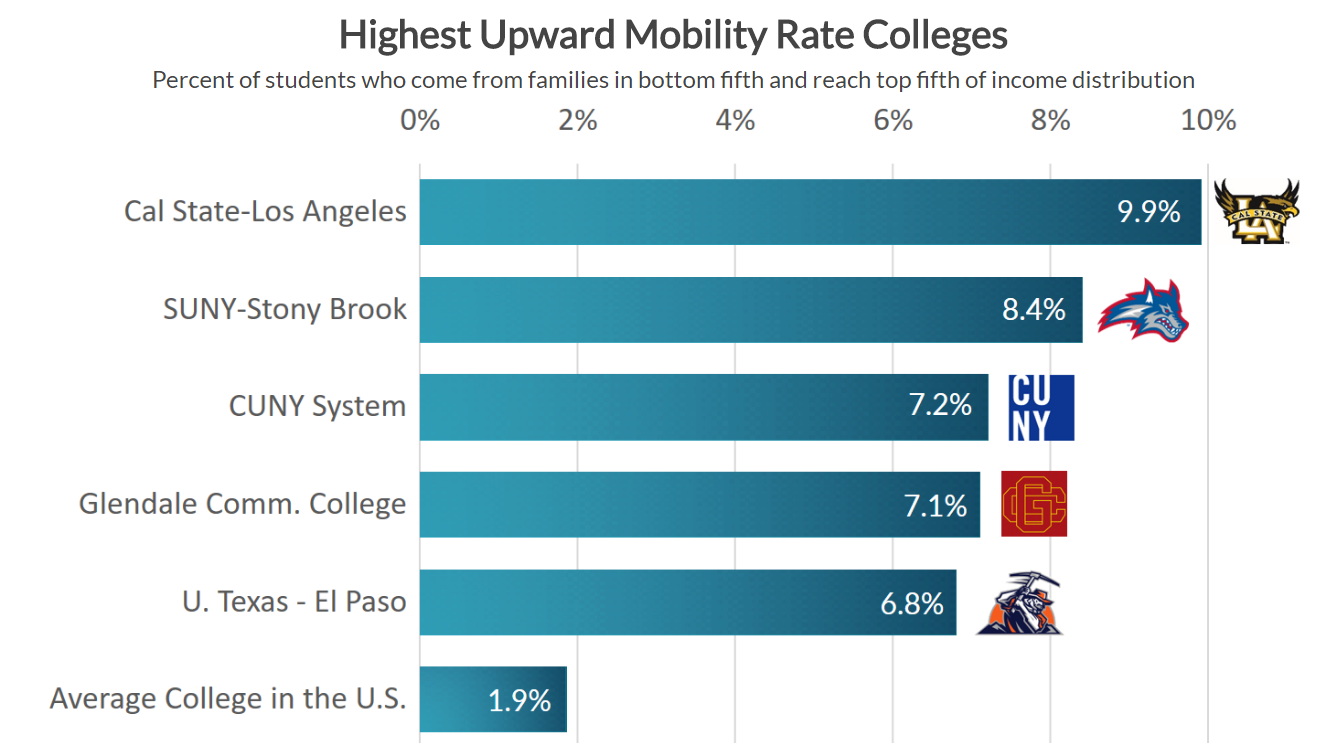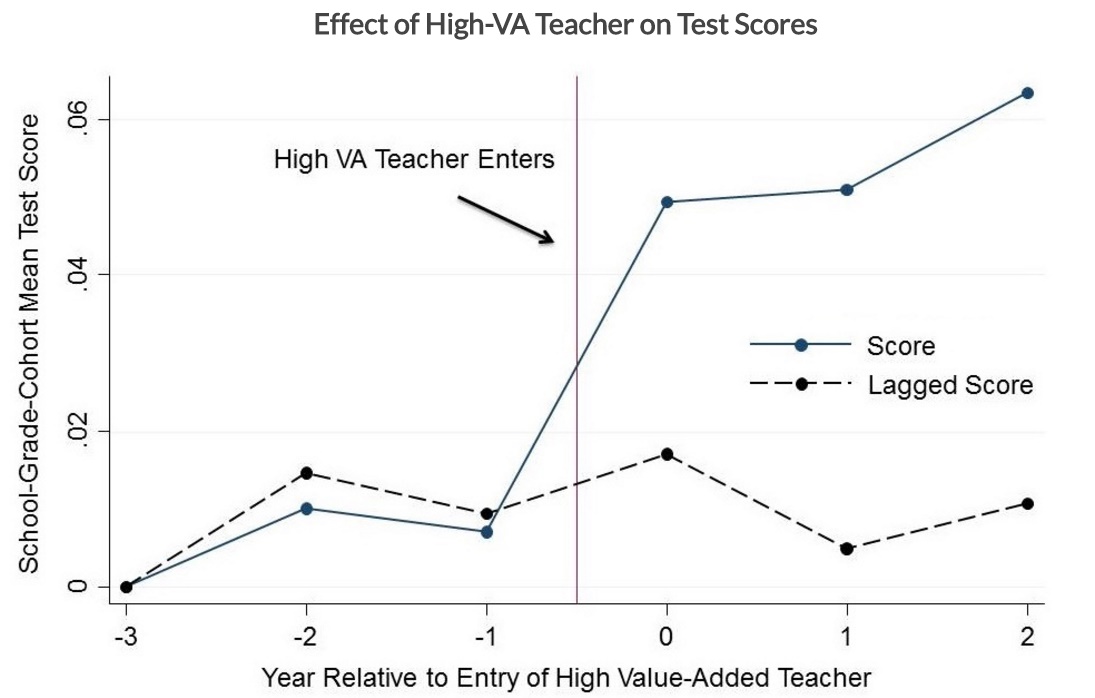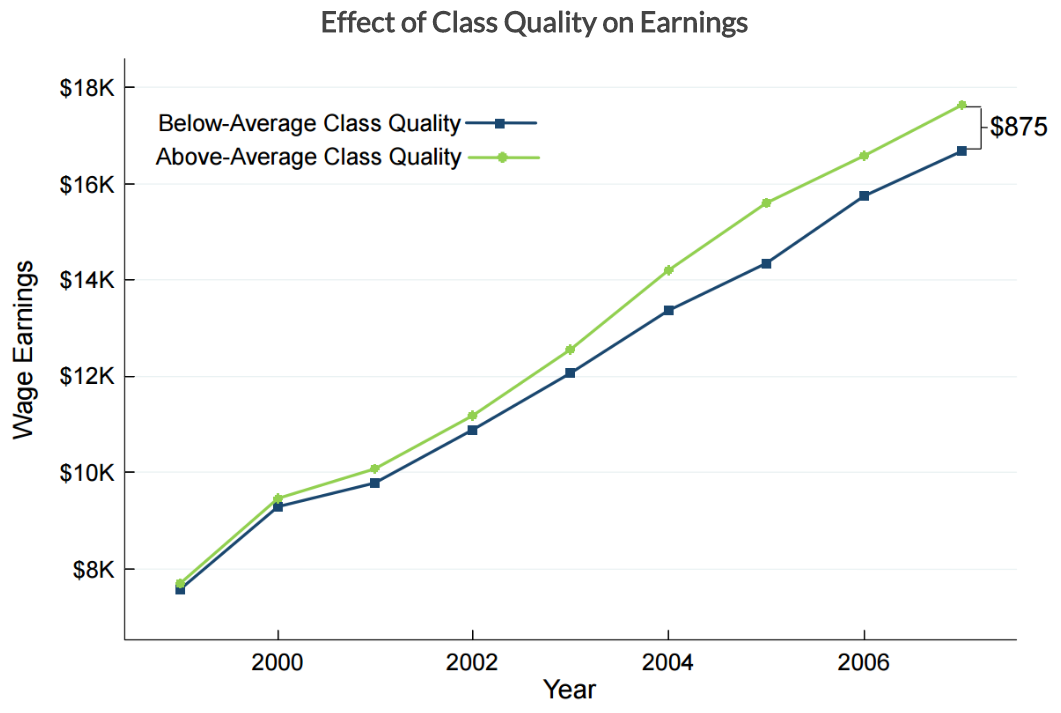
The Long-Term Impacts of Teachers: Teacher Value-Added and Student Outcomes in Adulthood
What is the best way to measure and improve teacher quality? One method is to evaluate teachers based on their impacts on students’ test scores, the “value-added” (VA) approach. First, we evaluate the accuracy of standard VA measures using several methods, including natural experiments that arise from changes in teaching staff. We find that students assigned to higher VA teachers are more likely to attend college, earn higher salaries, live in better neighborhoods, and save more for retirement.

